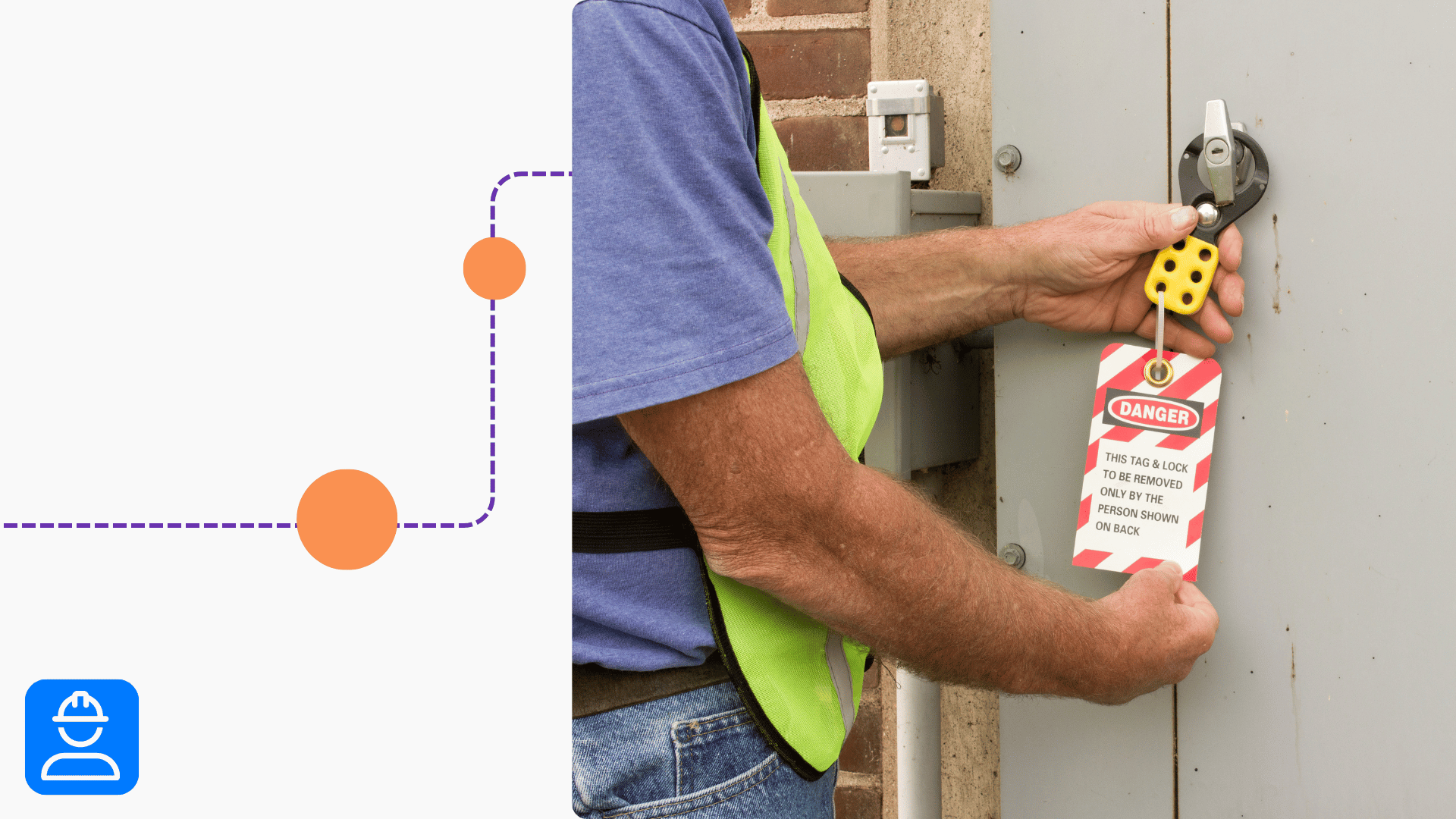Following lockout tagout (LOTO) procedures is a critical element of workplace safety. These procedures protect employees from preventable injuries by creating a safer environment and removing risks. Use this lockout tagout toolbox talk to remind your team how important it is to follow the LOTO process carefully each time.
Lockout tagout toolbox talk overview
During this toolbox talk, we’ll cover these main topics:
- The importance of lockout tagout
- Steps to follow
- Mistakes to avoid
As you perform the LOTO procedures, always maintain situational awareness to protect yourself and others. If you become complacent during this process, you can easily miss a step and cause a safety incident, so stay alert and proactive.
Why lockout tagout matters
Lockout tagout is a critical safety procedure because it prevents hazardous energy sources from hurting anyone while maintenance takes place. Uncontrolled energy sources can cause burns, shocks, crush injuries, amputations, and even fatalities.
This process also keeps safety top of mind, requiring you to inspect the area before doing anything else. Through careful consideration, you can control not only energy sources but also other safety hazards in the work area. In this way, lockout tagout has several benefits that extend beyond the equipment itself.
The six steps of lockout tagout
There are six main steps in the lockout tagout process. You must follow these steps to complete a successful lockout.
Prepare: Find all the equipment energy sources (electrical, hydraulic, pneumatic, etc.) and assess the risks before doing anything else.
Notify: Tell affected employees that you’re about to lock out the equipment.
Shutdown: Turn off the equipment according to the manufacturer guidelines.
Isolate: Disconnect the equipment from the energy source by turning off breakers, closing valves, unplugging power sources, etc.
Lockout and tagout: Put a lock and a tag on the energy isolation device to prevent others from using it and to communicate that you’ve closed it off.
Verify: Test the equipment to make sure there’s no energy flowing.
Your role in lockout tagout success
As the person completing the LOTO process, you play the most important role in preventing incidents. The only way to do this is to follow the procedure to the letter, making sure that everything is safe before moving onto the next step. Skipping even a single step can cause an injury.
You also need to report any hazards you see during the lockout tagout process. They could be anything from broken locks to missing shutdown procedures. The earlier you report concerns, the faster we can address them.
Aside from completing the process and reporting hazards, your only other responsibility is protecting yourself. Situational awareness and safe behaviors are the key to avoiding incidents and preventing injury.
Common mistakes to avoid
One of the biggest mistakes you can make is to skip the verification stage. You might feel that because you followed all the steps that there’s no way the equipment could still have energy flowing. But you’d be surprised by how often there’s residual energy to clear before the system is totally safe.
Similarly, you need to double check that you’ve found all the available energy sources. Even a single missed source can cause major safety issues.
Inspect your locks and labels to make sure they’re not defective. A loose lock can easily compromise the integrity of the process.
And if you’re ever unsure of what to do with a piece of equipment, ask for help. There are too many risks involved in LOTO to make assumptions about the safety or security of the equipment. If we approach each lockout with the same amount of care and caution, then we can avoid preventable incidents and keep everyone safe.




